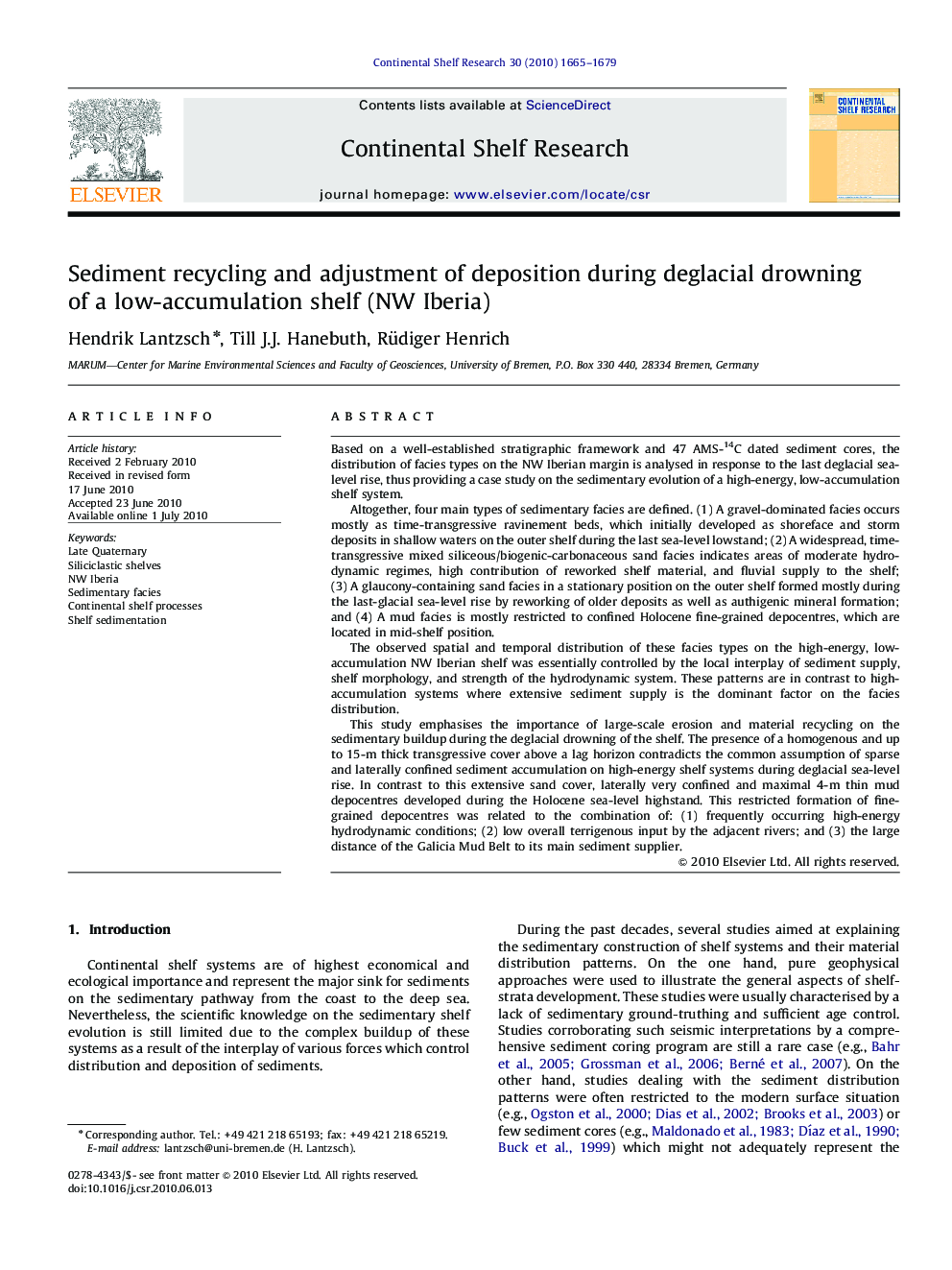| کد مقاله | کد نشریه | سال انتشار | مقاله انگلیسی | نسخه تمام متن |
|---|---|---|---|---|
| 4532853 | 1325152 | 2010 | 15 صفحه PDF | دانلود رایگان |

Based on a well-established stratigraphic framework and 47 AMS-14C dated sediment cores, the distribution of facies types on the NW Iberian margin is analysed in response to the last deglacial sea-level rise, thus providing a case study on the sedimentary evolution of a high-energy, low-accumulation shelf system.Altogether, four main types of sedimentary facies are defined. (1) A gravel-dominated facies occurs mostly as time-transgressive ravinement beds, which initially developed as shoreface and storm deposits in shallow waters on the outer shelf during the last sea-level lowstand; (2) A widespread, time-transgressive mixed siliceous/biogenic-carbonaceous sand facies indicates areas of moderate hydrodynamic regimes, high contribution of reworked shelf material, and fluvial supply to the shelf; (3) A glaucony-containing sand facies in a stationary position on the outer shelf formed mostly during the last-glacial sea-level rise by reworking of older deposits as well as authigenic mineral formation; and (4) A mud facies is mostly restricted to confined Holocene fine-grained depocentres, which are located in mid-shelf position.The observed spatial and temporal distribution of these facies types on the high-energy, low-accumulation NW Iberian shelf was essentially controlled by the local interplay of sediment supply, shelf morphology, and strength of the hydrodynamic system. These patterns are in contrast to high-accumulation systems where extensive sediment supply is the dominant factor on the facies distribution.This study emphasises the importance of large-scale erosion and material recycling on the sedimentary buildup during the deglacial drowning of the shelf. The presence of a homogenous and up to 15-m thick transgressive cover above a lag horizon contradicts the common assumption of sparse and laterally confined sediment accumulation on high-energy shelf systems during deglacial sea-level rise. In contrast to this extensive sand cover, laterally very confined and maximal 4-m thin mud depocentres developed during the Holocene sea-level highstand. This restricted formation of fine-grained depocentres was related to the combination of: (1) frequently occurring high-energy hydrodynamic conditions; (2) low overall terrigenous input by the adjacent rivers; and (3) the large distance of the Galicia Mud Belt to its main sediment supplier.
Journal: Continental Shelf Research - Volume 30, Issue 15, 1 September 2010, Pages 1665–1679